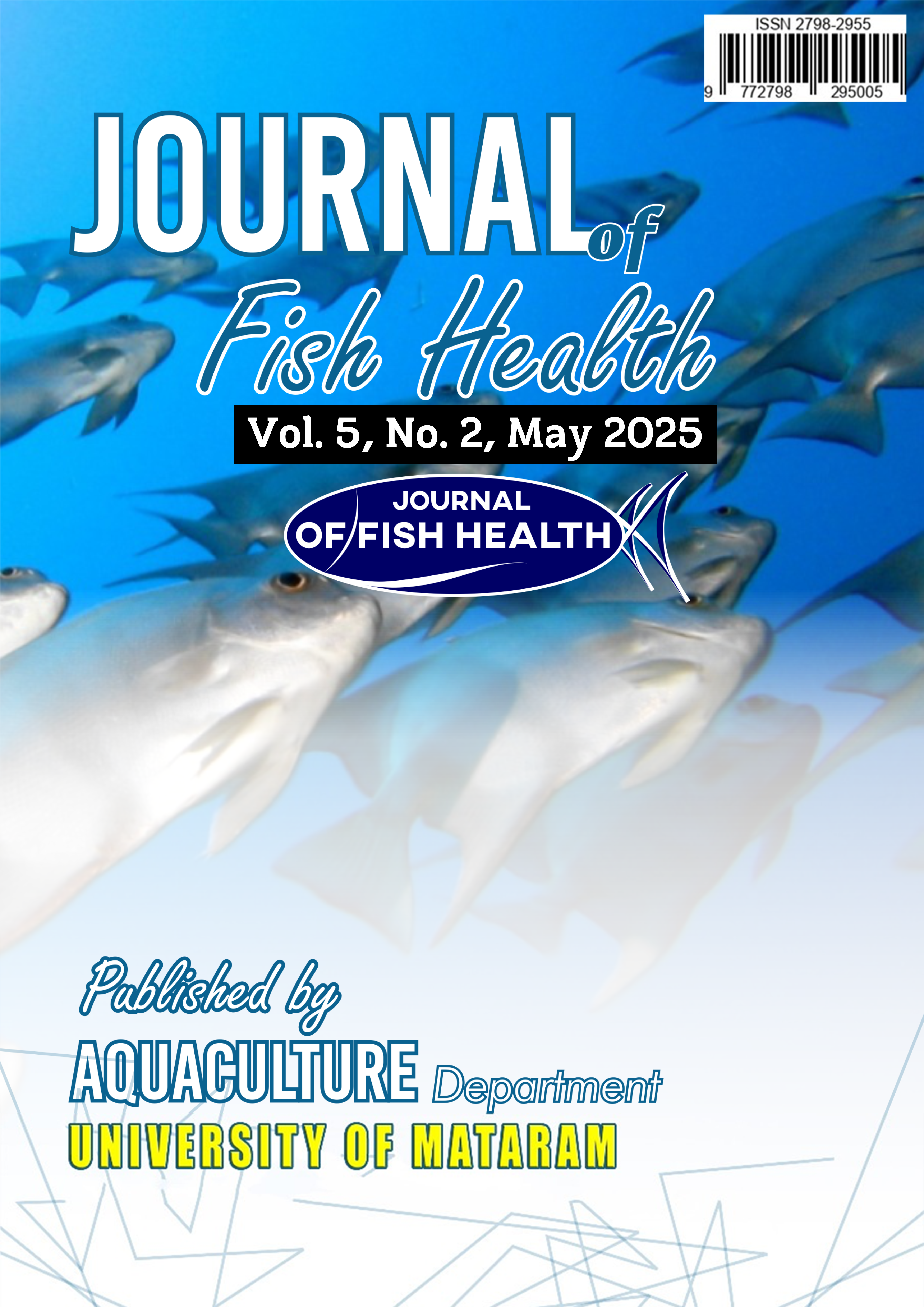Spawning Technique of Abalone (Haliotis squamata) Broodstock at Balai Perikanan Budidaya Laut (BPBL) Lombok
DOI:
https://doi.org/10.29303/jfh.v5i2.6411Keywords:
Abalone, Eggs, Gracilaria sp., Haliotis squamata, SpawningAbstract
Abalone is one of the species of the Gastropoda class. There are 7 types of abalone that are spread throughout Indonesian waters, including Haliotis asinina, H. varia, H. squamata, H. ovina, H. glabra, H. planate and H. crebrisculpta. Abalone Haliotis squamata is one of the abalone species that is cultivated at Balai Perikanan Budidaya Laut (BPBL) Lombok. The abalone breeding technique at BPBL Lombok is carried out massively with a ratio of male and female abalone breeders of 1:3. The success rate of abalone breeding is determined by the level of gonad maturity, water quality, irradiation period as well as the length and weight of the abalone body. Abalone breeding begins with container preparation by adding 300 chlorinated limes (kaporit). Abalone breeders are maintained by placing them in a 300 x 80 x 80 cm fiber tank containing four baskets, three baskets containing female abalones and one basket containing male abalones. The feed given to abalone breeders is Gracilaria sp. and Ulva sp., while the feed for larvae is Nitzchia sp. feed. Abalone breeding begins with breeder selection. Breeders used are those that have mature gonads or gonads that have entered TKG 3 which are marked by gonad size larger than the shell. Abalone breeders must be over 4 cm in size and free from disease and. Abalone breeding is marked by the presence of a fishy smell and cloudy water in the container. The number of eggs produced from mass breeding is 1,041,600 grains.
Downloads
Published
Issue
Section
License
1. The copyright of this journal belongs to the Editorial Board, based on the author's consent, while the moral rights of the publication belong to the author(s).
2. The formal legal aspect of journal accessibility refers to the same Creative Common Attribution + Noncommercial + ShareAlike (CC BY-NC-SA), implying that publication can be used for non-commercial purposes in its original form.
3. Every publication (printed/electronic) is open access for educational, research and library purposes. In addition to the objectives stated above, the editorial board is not responsible for copyright infringement















